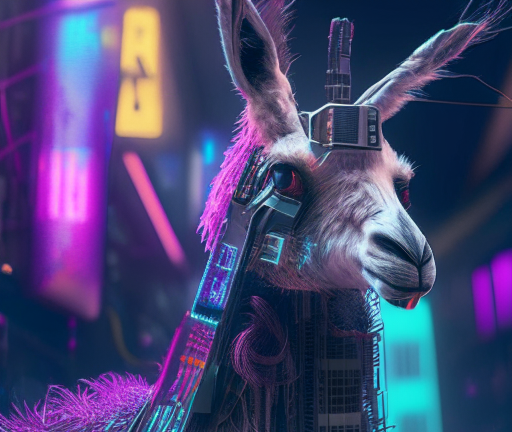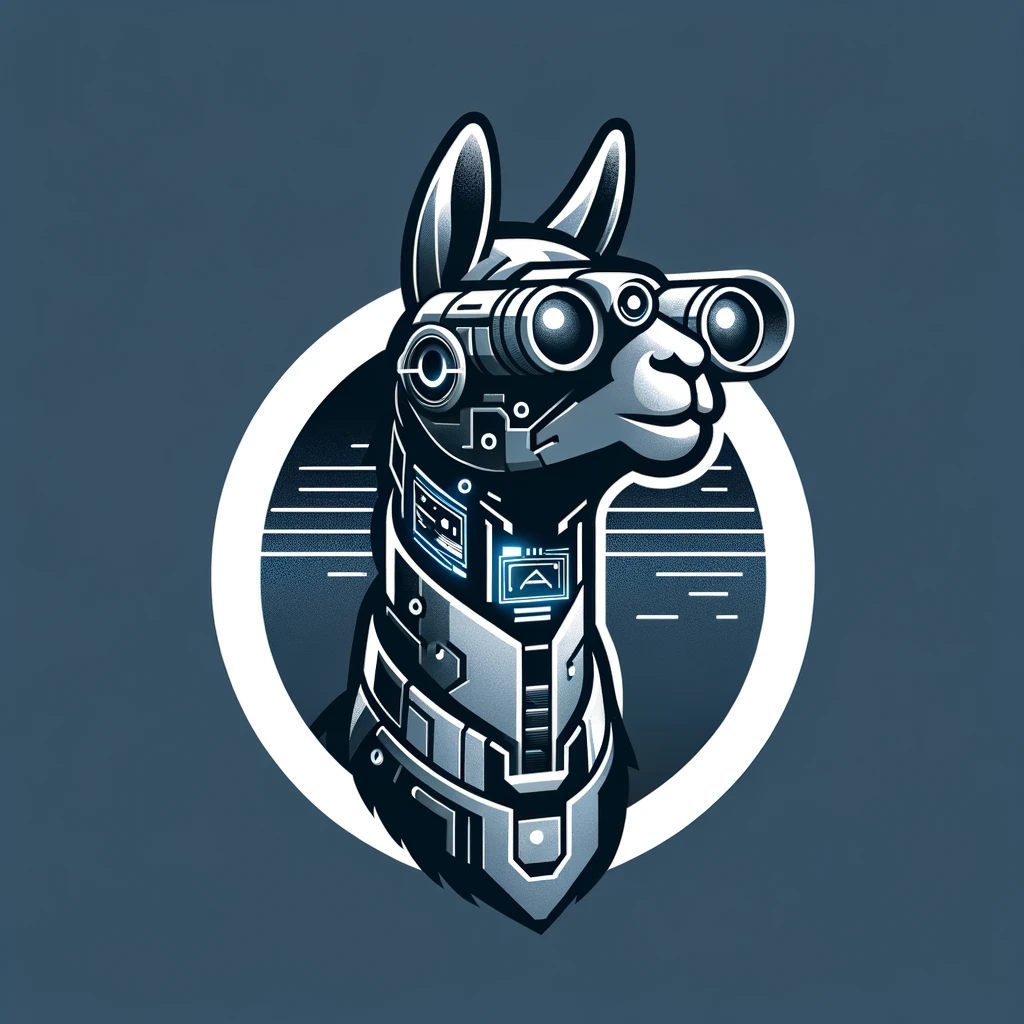vicuna-13b
Maintainer: replicate

251

| Property | Value |
|---|---|
| Model Link | View on Replicate |
| API Spec | View on Replicate |
| Github Link | View on Github |
| Paper Link | View on Arxiv |
Get summaries of the top AI models delivered straight to your inbox:
Model overview
vicuna-13b is an open-source large language model (LLM) developed by Replicate. It is based on Meta's LLaMA model and has been fine-tuned on user-shared conversations from ShareGPT. According to the provided information, vicuna-13b outperforms comparable models like Stanford Alpaca, and reaches 90% of the quality of OpenAI's ChatGPT and Google Bard.
Model inputs and outputs
vicuna-13b is a text-based LLM that can be used to generate human-like responses to prompts. The model takes in a text prompt as input and produces a sequence of text as output.
Inputs
- Prompt: The text prompt that the model will use to generate a response.
- Seed: A seed for the random number generator, used for reproducibility.
- Debug: A boolean flag to enable debugging output.
- Top P: The percentage of most likely tokens to sample from when decoding text.
- Temperature: A parameter that adjusts the randomness of the model's outputs.
- Repetition Penalty: A penalty applied to repeated words in the generated text.
- Max Length: The maximum number of tokens to generate in the output.
Outputs
- Output: An array of strings representing the generated text.
Capabilities
vicuna-13b is capable of generating human-like responses to a wide variety of prompts, from open-ended conversations to task-oriented instructions. The model has shown strong performance in evaluations compared to other LLMs, suggesting it can be a powerful tool for applications like chatbots, content generation, and more.
What can I use it for?
vicuna-13b can be used for a variety of applications, such as:
- Developing conversational AI assistants or chatbots
- Generating text content like articles, stories, or product descriptions
- Providing task-oriented assistance, such as answering questions or providing instructions
- Exploring the capabilities of large language models and their potential use cases
Things to try
One interesting aspect of vicuna-13b is its ability to generate responses that capture the nuances and patterns of human conversation, as it was trained on real user interactions. You could try prompting the model with more open-ended or conversational prompts to see how it responds, or experiment with different parameter settings to explore the model's capabilities.
This summary was produced with help from an AI and may contain inaccuracies - check out the links to read the original source documents!
Related Models

vicuna-13b-v1.3

9
The vicuna-13b-v1.3 is a language model developed by the lmsys team. It is based on the Llama model from Meta, with additional training to instill more capable and ethical conversational abilities. The vicuna-13b-v1.3 model is similar to other Vicuna-based models and the Llama 2 Chat models in that they all leverage the strong language understanding and generation capabilities of Llama while fine-tuning for more natural, engaging, and trustworthy conversation. Model inputs and outputs The vicuna-13b-v1.3 model takes a single input - a text prompt - and generates a text response. The prompt can be any natural language instruction or query, and the model will attempt to provide a relevant and coherent answer. The output is an open-ended text response, which can range from a short phrase to multiple paragraphs depending on the complexity of the input. Inputs Prompt**: The natural language instruction or query to be processed by the model Outputs Response**: The model's generated text response to the input prompt Capabilities The vicuna-13b-v1.3 model is capable of engaging in open-ended dialogue, answering questions, providing explanations, and generating creative content across a wide range of topics. It has been trained to be helpful, honest, and harmless, making it suitable for various applications such as customer service, education, research assistance, and creative writing. What can I use it for? The vicuna-13b-v1.3 model can be used for a variety of applications, including: Conversational AI**: The model can be integrated into chatbots or virtual assistants to provide natural language interaction and task completion. Content Generation**: The model can be used to generate text for articles, stories, scripts, and other creative writing projects. Question Answering**: The model can be used to answer questions on a wide range of topics, making it useful for research, education, and customer support. Summarization**: The model can be used to summarize long-form text, making it useful for quickly digesting and understanding complex information. Things to try Some interesting things to try with the vicuna-13b-v1.3 model include: Engaging the model in open-ended dialogue to see the depth and nuance of its conversational abilities. Providing the model with creative writing prompts and observing the unique and imaginative responses it generates. Asking the model to explain complex topics, such as scientific or historical concepts, and evaluating the clarity and accuracy of its explanations. Pushing the model's boundaries by asking it to tackle ethical dilemmas or hypothetical scenarios, and observing its responses.
Updated Invalid Date

vicuna-7b-v1.3

11
The vicuna-7b-v1.3 is a large language model developed by LMSYS through fine-tuning the LLaMA model on user-shared conversations collected from ShareGPT. It is designed as a chatbot assistant, capable of engaging in natural language conversations. This model is related to other Vicuna and LLaMA-based models such as vicuna-13b-v1.3, upstage-llama-2-70b-instruct-v2, llava-v1.6-vicuna-7b, and llama-2-7b-chat. Model inputs and outputs The vicuna-7b-v1.3 model takes a text prompt as input and generates relevant text as output. The prompt can be an instruction, a question, or any other natural language input. The model's outputs are continuations of the input text, generated based on the model's understanding of the context. Inputs Prompt**: The text prompt that the model uses to generate a response. Temperature**: A parameter that controls the model's creativity and diversity of outputs. Lower temperatures result in more conservative and focused outputs, while higher temperatures lead to more exploratory and varied responses. Max new tokens**: The maximum number of new tokens the model will generate in response to the input prompt. Outputs Generated text**: The model's response to the input prompt, which can be of variable length depending on the prompt and parameters. Capabilities The vicuna-7b-v1.3 model is capable of engaging in open-ended conversations, answering questions, providing explanations, and generating creative text across a wide range of topics. It can be used for tasks such as language modeling, text generation, and chatbot development. What can I use it for? The primary use of the vicuna-7b-v1.3 model is for research on large language models and chatbots. Researchers and hobbyists in natural language processing, machine learning, and artificial intelligence can use this model to explore various applications, such as conversational AI, task-oriented dialogue systems, and language generation. Things to try With the vicuna-7b-v1.3 model, you can experiment with different prompts to see how the model responds. Try asking it questions, providing it with instructions, or giving it open-ended prompts to see the range of its capabilities. You can also adjust the temperature and max new tokens parameters to observe how they affect the model's output.
Updated Invalid Date

llava-v1.6-vicuna-13b

17.6K
llava-v1.6-vicuna-13b is a large language and vision AI model developed by yorickvp, building upon the visual instruction tuning approach pioneered in the original llava-13b model. Like llava-13b, it aims to achieve GPT-4 level capabilities in combining language understanding and visual reasoning. Compared to the earlier llava-13b model, llava-v1.6-vicuna-13b incorporates improvements such as enhanced reasoning, optical character recognition (OCR), and broader world knowledge. Similar models include the larger llava-v1.6-34b with the Nous-Hermes-2 backbone, as well as the moe-llava and bunny-phi-2 models which explore different approaches to multimodal AI. However, llava-v1.6-vicuna-13b remains a leading example of visual instruction tuning towards building capable language and vision assistants. Model Inputs and Outputs llava-v1.6-vicuna-13b is a multimodal model that can accept both text prompts and images as inputs. The text prompts can be open-ended instructions or questions, while the images provide additional context for the model to reason about. Inputs Prompt**: A text prompt, which can be a natural language instruction, question, or description. Image**: An image file URL, which the model can use to provide a multimodal response. History**: A list of previous message exchanges, alternating between user and assistant, which can help the model maintain context. Temperature**: A parameter that controls the randomness of the model's text generation, with higher values leading to more diverse outputs. Top P**: A parameter that controls the model's text generation by only sampling from the top p% of the most likely tokens. Max Tokens**: The maximum number of tokens the model should generate in its response. Outputs Text Response**: The model's generated response, which can combine language understanding and visual reasoning to provide a coherent and informative answer. Capabilities llava-v1.6-vicuna-13b demonstrates impressive capabilities in areas such as visual question answering, image captioning, and multimodal task completion. For example, when presented with an image of a busy city street and the prompt "Describe what you see in the image", the model can generate a detailed description of the various elements, including buildings, vehicles, pedestrians, and signage. The model also excels at understanding and following complex, multi-step instructions. Given a prompt like "Plan a trip to New York City, including transportation, accommodation, and sightseeing", llava-v1.6-vicuna-13b can provide a well-structured itinerary with relevant details and recommendations. What Can I Use It For? llava-v1.6-vicuna-13b is a powerful tool for building intelligent, multimodal applications across a wide range of domains. Some potential use cases include: Virtual assistants**: Integrate the model into a conversational AI assistant that can understand and respond to user queries and instructions involving both text and images. Multimodal content creation**: Leverage the model's capabilities to generate image captions, visual question-answering, and other multimodal content for websites, social media, and marketing materials. Instructional systems**: Develop interactive learning or training applications that can guide users through complex, step-by-step tasks by understanding both text and visual inputs. Accessibility tools**: Create assistive technologies that can help people with disabilities by processing multimodal information and providing tailored support. Things to Try One interesting aspect of llava-v1.6-vicuna-13b is its ability to handle finer-grained visual reasoning and understanding. Try providing the model with images that contain intricate details or subtle visual cues, and see how it can interpret and describe them in its responses. Another intriguing possibility is to explore the model's knowledge and reasoning about the world beyond just the provided visual and textual information. For example, you could ask it open-ended questions that require broader contextual understanding, such as "What are some potential impacts of AI on society in the next 10 years?", and see how it leverages its training to generate thoughtful and well-informed responses.
Updated Invalid Date

llava-v1.6-vicuna-7b

16.6K
llava-v1.6-vicuna-7b is a visual instruction-tuned large language and vision model created by Replicate that aims to achieve GPT-4 level capabilities. It builds upon the llava-v1.5-7b model, which was trained using visual instruction tuning to connect language and vision. The llava-v1.6-vicuna-7b model further incorporates the Vicuna-7B language model, providing enhanced language understanding and generation abilities. Similar models include the llava-v1.6-vicuna-13b, llava-v1.6-34b, and llava-13b models, all created by Replicate's yorickvp. These models aim to push the boundaries of large language and vision AI assistants. Another related model is the whisperspeech-small from lucataco, which is an open-source text-to-speech system built by inverting the Whisper model. Model inputs and outputs llava-v1.6-vicuna-7b is a multimodal AI model that can accept both text and image inputs. The text input can be in the form of a prompt, and the image can be provided as a URL. The model then generates a response that combines language and visual understanding. Inputs Prompt**: The text prompt provided to the model to guide its response. Image**: The URL of an image that the model can use to inform its response. Temperature**: A value between 0 and 1 that controls the randomness of the model's output, with lower values producing more deterministic responses. Top P**: A value between 0 and 1 that controls the amount of the most likely tokens the model will sample from during text generation. Max Tokens**: The maximum number of tokens the model will generate in its response. History**: A list of previous chat messages, alternating between user and model responses, that the model can use to provide a coherent and contextual response. Outputs Response**: The model's generated text response, which can incorporate both language understanding and visual information. Capabilities llava-v1.6-vicuna-7b is capable of generating human-like responses to prompts that involve both language and visual understanding. For example, it can describe the contents of an image, answer questions about an image, or provide instructions for a task that involves both text and visual information. The model's incorporation of the Vicuna language model also gives it strong language generation and understanding capabilities, allowing it to engage in more natural and coherent conversations. What can I use it for? llava-v1.6-vicuna-7b can be used for a variety of applications that require both language and vision understanding, such as: Visual Question Answering**: Answering questions about the contents of an image. Image Captioning**: Generating textual descriptions of the contents of an image. Multimodal Dialogue**: Engaging in conversations that involve both text and visual information. Multimodal Instruction Following**: Following instructions that involve both text and visual cues. By combining language and vision capabilities, llava-v1.6-vicuna-7b can be a powerful tool for building more natural and intuitive human-AI interfaces. Things to try One interesting thing to try with llava-v1.6-vicuna-7b is to provide it with a series of related images and prompts to see how it can maintain context and coherence in its responses. For example, you could start with an image of a landscape, then ask it follow-up questions about the scene, or ask it to describe how the scene might change over time. Another interesting experiment would be to try providing the model with more complex or ambiguous prompts that require both language and visual understanding to interpret correctly. This could help reveal the model's strengths and limitations in terms of its multimodal reasoning capabilities. Overall, llava-v1.6-vicuna-7b represents an exciting step forward in the development of large language and vision AI models, and there are many interesting ways to explore and understand its capabilities.
Updated Invalid Date